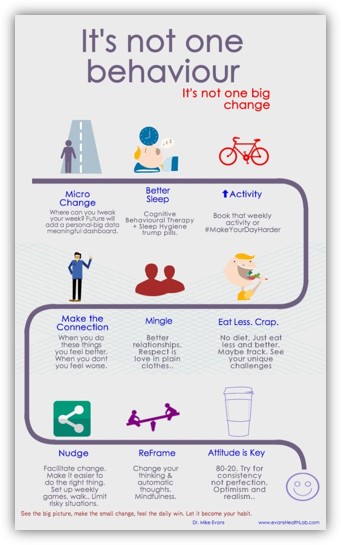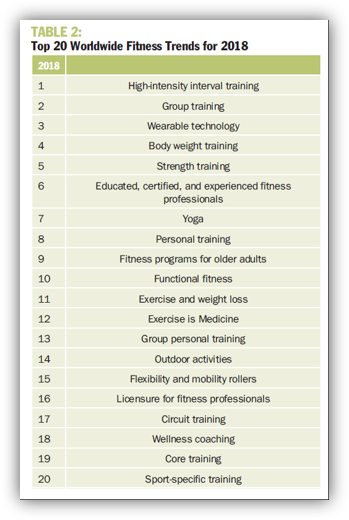The New Smoking…
Jaws drop when I tell students that, when I studied in the same classroom, there were ashtrays on our desks and it wasn’t unusual for the professor, a medical doctor, to pause mid-lecture and light his pipe. A few of us also happily puffed away. Many were to be future healthcare providers, but didn’t anticipate how gobsmacking dumb it was. “I hope”, I tell them, “that when you are standing in front of young people, years from now, you can share with them a similar story about how your current know-how turned out so wrongheaded.”
But now, Not Exercising is worse
With another leap forward, a new study has underscored that while it’s common knowledge that there are many benefits to being fit, skipping out on regular physical activity is really, really bad for your health. Bad bad. In fact, the study claims that not exercising may be more harmful to your health than smoking.
Tell me more…
The findings, published last month in the journal JAMA Network Open, even made the under-scroll section of the evening news on major networks. The study describes how researchers at the Cleveland Clinic studied 122,007 patients from 1991 to 2014, putting them through treadmill testing and later recording mortality rates. The results: people who achieved high levels of exercise lived a longer, healthier life.
“Cardiorespiratory fitness is inversely associated with long-term mortality with no observed upper limit of benefit,” the study says. “Extremely high aerobic fitness was associated with the greatest survival and was associated with benefit in older patients and those with hypertension.”
Dr Wael Jaber, co-author of the study, called the results surprising. “Being unfit on a treadmill or in an exercise stress test has a worse prognosis, as far as death, than being hypertensive, being diabetic or being a current smoker,” said Jaber in a CNN interview. “We’ve never seen something as pronounced as this and as objective as this.”
The study also looked at the risk of being overactive and found that “ultra” exercisers do not face higher risk of death: the research consistently found that the more a person exercises the lower their mortality rates.
What it means…
The report calls for health care professionals to encourage patients to start exercise and maintain it. That’s a big ask considering exercise uptake and adherence rates haven’t changed for the better in 40 years. But with this new take on an old problem, maybe the stop smoking comparison will add enough urgency for some to renew their commitment and get moving, before they die because they didn’t. If that’s you, read on, because what has changed for the better is our understanding of how to make change succeed, how to start exercise and stay with it.
What can I do?
If you aren’t a regular exerciser, relax, you are in the majority. But you’ve got some work to do. Help comes in the form of Behaviour Change research.
This science has evolved over the past 40 years. Way back, we were taught that people only needed to be told, ‘educated’ and presto-chango … voila! Not so. In the 1970’s, after plastering stop smoking ads and cigarette packages with shocking pictures of cancerous lungs and watching smoking rates remain static, the experts made a 180-degree change in perspective. Rather than appealing to logic and reason, they started to address what deeply drives us: things like self-worth and our need to be accepted. Once the ads started to show smokers huddling outside on the balcony at a party and include messaging that smoking wasn’t cool, people started to butt out.
You don’t need to be told that exercise is good for you. You know. And this new research that inactivity is worse than smoking probably isn’t that surprising, at least in the part of your brain where reason resides. The successful steps forward toward change are in another part, where your sense of self-worth resides. That’s where you need to go to succeed.
Listen to your CoachWithin
Of the various newer theories about successful change, with fancy names such as: Trans-theoretical Model (TTM (aka: stages of change)), SMART goal setting, Motivational Interviewing and Choice Architecture, a common feature is that you, make that YOU, hold the keys to the path forward. Those helping you need to stop telling you and help you listen to your self. We call it your CoachWithin and we made a company and an exercise device inspired to fuel the self-management gene.
Science Says: 5 Steps for Success – to start exercise and stay with it.
- Decide You are Worth It
- People with a positive self-perception are most likely participate and continue. But its not just you who fuels your self-worth. Positive feedback from exercise professionals, reinforcement that you are making progress, and the social support of significant others, all play a role.
- Small Steps Matter: Its not One Behaviour or One BIG Change
- Give yourself a break and a better chance for success and check out this infographic from Dr Mike Evans at ReframeHealthLab.com.
- Place, Program and People, Matter

- Find a facility, or your own dedicated space, a proven method and experts you trust.
- Leaders who provide positive feedback and knowledgeable guidance and who show a high mastery and inspiring personal training habits enhance confidence in your ability to exercise and be consistent.
- Social support from significant other or meaningful friend highly increase your ability to succeed.
- Groups Work for most of us: partnering with a buddy or a workout group (cardio clubs, boot camps) enrich the workout experience and adherence.
- Set the Right Type of Goals
- Process goals (the journey) work BEST for success: i.e. maintain your heart rate above 140 bpm for 30 minutes of your 40-minute session; keep up with others, longer than before.; accomplish that difficult move, with confidence.
- Outcome goals (the destination) DON’T: i.e. Lose 4 kg in 8 weeks; six-pack or nothing.
- Choose Fun, Engagement and Coming Trends
- What turns you on or makes you smile? Forget terms like BMI, VO2, cardio, sets/reps. Look for fun and a sense of personal meaning in the activities you choose.
- Moving is FUN. We knew it at recess in grade school, without needing to be told why. Expect it again in what you do for fitness.
- Every year the American College of Sports Medicine surveys fitness professionals across the globe, asking for their predictions of coming fitness trends. Check out the top 20 here. See what’s coming and ask yourself if your current facility or practice is staying up to date. (full survey)
Where does eJ and eJercising Fit?
I invented eJ and eJercising as part of a 30 year search for a simple, single solution to break the barriers keeping people from achieving their exercise goals. I have seen every contraption and heard every excuse, so I came up with a ‘different kind of every’: every person could meet every fitness element in every session, everywhere they happened to be. (Full Story)
A gym in the palm of your hand, eJ is the Single Fitness Solution. Patented, it is fully adjustable for size and resistance. Use eJ as a standalone full package fitness program or to enhance your current practice: yoga, golf, skating…. whatever you do. eJ gets to the heart of 3D movement. BUT, most of all, it is a blast!
Use eJ Everywhere. I can have a whole-body, 25 min, 550 cal. workout all by myself on the ocean shore, or with friends in a gym, a corner in any crappy hotel gym, the back deck, the living room, or my favourite BOBintheBASEMENT.
Check out me and my friends like you, using eJ Everywhere. Send us your everywhere and we will post it.
References
- Huberty, J.L. et al. 2008. “Explaining Long term exercise adherence in women structured exercise program”, Research Quarterly for Exercise and Sport 79, No.3, 374–384.
- Mandsager, K. et al. 2018. “Association of cardiorespiratory fitness with long-term mortality among adults undergoing exercise treadmill testing”, JAMA Network Open 1, No.6, 1-12.
- Seguin, R.A. et al. 2010. “Strength training and older women: a cross-sectional study examining factors related to exercise adherence”, Journal of Aging and Physical Activity, 201-218.
- Trost, S.G., et al. 2002. “Correlates of adults’ participation in physical activity Review and update”, Med. Sci. Sports Exerc. 34, No.12, 1996–2001.
- Whaley, D.E. and A.F Schrider. 2005. “The process of adult exercise adherence: self-perceptions and competence”, The Sport Psychologist 19, 148-163.
- Wilson, K. and D. Brookfield. 2009. “Effect of goal setting on motivation and adherence in a six-week exercise program”, International Journal of Sport and Exercise Psychology 7, No.1, 89-100.





